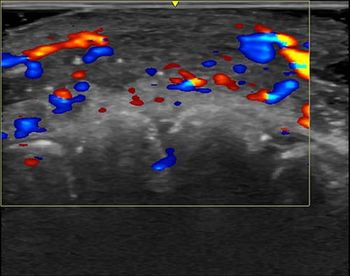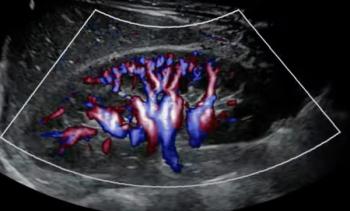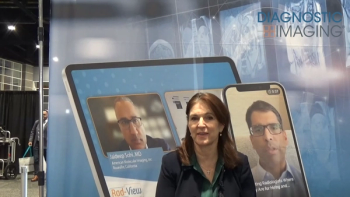
Hologic's acquisition of DRC moves close to completion
Hologic's acquisition of DRC moves close to completionDensitometry firm plans OEM deals, relationships with PACS vendorsThe turbulent world of digital radiography took an unexpected turn last month with the surprising announcement that
Hologic's acquisition of DRC moves close to completion
Densitometry firm plans OEM deals, relationships with PACS vendors
The turbulent world of digital radiography took an unexpected turn last month with the surprising announcement that bone densitometry firm Hologic would acquire Sterling Diagnostic Imaging's Direct Radiography Corp. The deal, which is now in due diligence, would consist of a combined cash and stock deal valued at about $30 million. The acquisition was expected to close in the last week of May.
Many industry watchers had predicted that a large modality or PACS player would be the logical acquirer of the Sterling digital radiography subsidiary, which was passed over by Agfa. OEMs and PACS vendors were involved in the bidding process, but DRC elected to accept the Hologic offer for a number of reasons, including the price and the speed of closing the deal, said Tom Umbel, general manager of DRC. Another benefit was the inclusion of DRC-owned real estate in the purchase.
Under the terms of the agreement, Hologic will pay $10 million in cash and issue 2.5 million shares of its stock at closing. Hologic gets DRC's 90 employees as well as a 168,000-square-foot R&D, manufacturing, and administrative site in Newark, DE. Hologic also inherits DRC's foreign patents and 26 U.S. patents. Hologic will use the purchase accounting method for the acquisition of DRC, and expects the transaction to be dilutive to earnings.
Hologic has been exploring acquisition opportunities to diversify beyond its densitometry products for over three years, said David Ellenbogen, chairman and CEO.
With the acquisition of DRC, Hologic hopes to use the technology as a platform for further expansion into the radiology and PACS market, in the form of additional acquisitions, distribution agreements, or OEM relationships, he said.
"Our goal is to be a supplier of the detector and to interface it with as many different PACS vendors as we can," he said.
DRC will be run as a wholly owned subsidiary, and the management team will remain intact, Umbel said. With the deal in place, DRC will also build up its direct sales force to take over sales responsibilities that had largely been handled by the Sterling organization. Hologic's sales force will also participate in sales efforts of iiRAD systems, Ellenbogen said.
In future product development plans, DRC will emphasize development of imaging plates at its Delaware facility, while Hologic will contribute resources for development of complete x-ray systems and expansion of the product line, Ellenbogen said. More product decisions will be made following the closing of the deal, he said.
For its part, Hologic's entry into the radiography market appears to be necessary because of slumping sales in its traditional densitometry market. In future plans, the company will explore the possible incorporation of DRC's DirectRay technology into a densitometer, Ellenbogen said. Another densitometry firm, Long Island, NY-based Schick Technologies, has experienced success with its AccuDEXA digital detector-based densitometer. Hologic's FluoroScan Imaging Systems C-arm subsidiary might also be able to take advantage of DirectRay technology, Ellenbogen said.
The move into radiology won't necessarily result in instant success for Hologic. The competitive flat-panel x-ray market has been slow to develop, due largely to the high cost of these systems compared with computed radiography and conventional analog-based units. In addition, the number of vendors in this area has grown quickly, with large players such as GE Medical Systems of Milwaukee, Philips Medical Systems North America of Shelton, CT, Picker International of Cleveland, and Siemens Medical Systems of Iselin, NJ, all gaining FDA clearances for their respective offerings in recent months.
"There's an inexorable trend towards digital radiology departments," Ellenbogen said. "We understand that the field has been slower to develop than predicted. But with the rate of adoption that we see, based on the current installation of PACS networks, we think our needs will be satisfied with the pace of development."
The difficulties and early developmental stage of the market are also evident in DRC's 1998 financial results. Despite being the first company to receive Food and Drug Administration 510(k) clearance for a non-CCD-based digital radiography system (PNN 7/98), Sterling was unable to convert its head start over other companies into strong financial returns. The firm had 1998 revenues of only $1 million, with a net loss of $13.8 million.
DRC executives expect that the company's OEM relationships will remain unchanged. DRC maintains an OEM and supplier relationship with Fischer Imaging, in which DRC provides DirectRay panels to the Denver-based firm for that company's digital trauma unit. Fischer also provides DRC with nondigital components for iiRAD products.
In other deals, DRC maintains an OEM relationship with Korean x-ray equipment manufacturer Dong Kang. Additional OEM agreements will be announced soon, Umbel said.
Search again Homepage
Newsletter
Stay at the forefront of radiology with the Diagnostic Imaging newsletter, delivering the latest news, clinical insights, and imaging advancements for today’s radiologists.




























